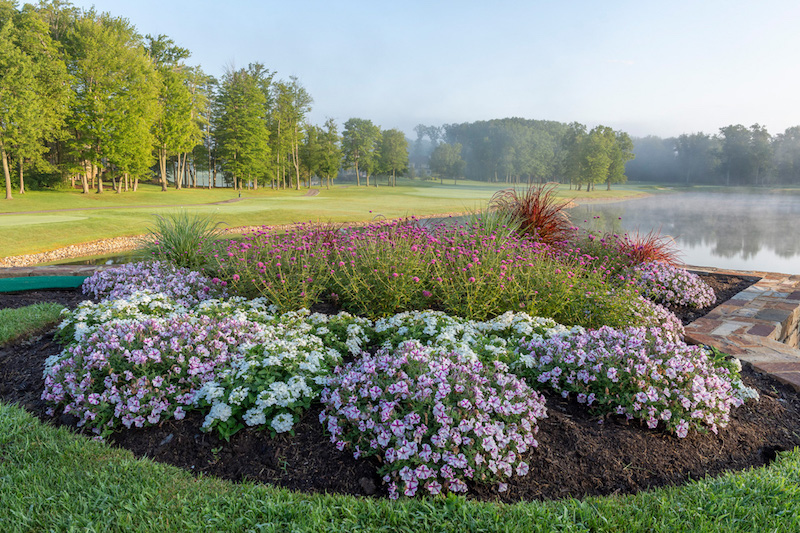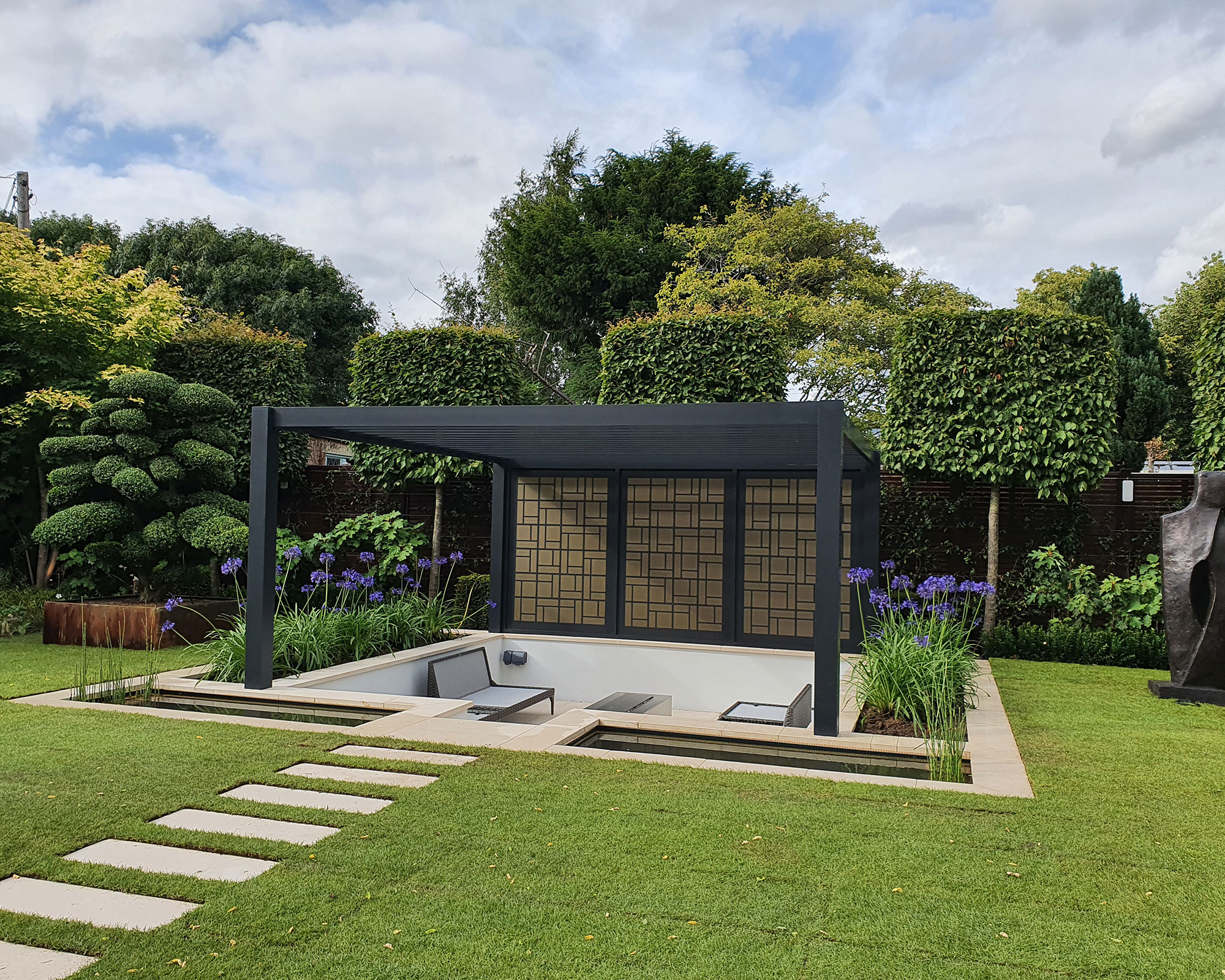Hilton Head Landscapes Fundamentals Explained
Hilton Head Landscapes Fundamentals Explained
Blog Article
The 30-Second Trick For Hilton Head Landscapes
Table of ContentsNot known Facts About Hilton Head LandscapesGetting The Hilton Head Landscapes To WorkNot known Factual Statements About Hilton Head Landscapes See This Report about Hilton Head LandscapesThe Of Hilton Head LandscapesThe Buzz on Hilton Head Landscapes7 Simple Techniques For Hilton Head LandscapesWhat Does Hilton Head Landscapes Mean?
Form compatibility is likewise a significant part of unity in designone or 2 strikingly different forms benefit comparison and focus, however typically all other forms need to have some resemblances for a combined look. Appearance describes just how crude or fine the surface of the plant or hardscape material really feels and/or looks.
Instances of plants with rugged appearance include philodendrons, agaves, bromeliads, hollies, hands, and hydrangeas. Features that produce great structure consist of small vegetation; thin, strappy fallen leaves (grasses) or high, slim stems; tiny, thick branches and small branches; long stems (vines); and tiny, delicate flowers.
Rumored Buzz on Hilton Head Landscapes
Most plants are average appearance, in that they can not be explained as having either rugged or fine structure. Medium-textured plants act as a history to link and combine the rugged- and fine-textured plants.

To make an area really feel smaller sized, put the rugged structures along the outer boundary and the fine appearances closest to the visitor. The information of the crude texture makes the plants appear closer and makes the space feel smaller sized. The viewed appearance of plants can also change with the range from the plant.
Not known Details About Hilton Head Landscapes
Bold shades enhance the comparison and make the structure appear coarser, while low-key shades can squash structure. Hardscape with a coarse texturesuch as really rough rocks and bold, big timberstends to make all plant material show up much more medium textured. Developers usually establish a texture research (Figure 8) on paper to aid determine the plan of plant materials.
Color in plant product and hardscape adds passion and selection to the landscape. Color is the most obvious aspect in the landscape and is typically the emphasis of the majority of property owners; however, it is also the most momentary element, typically lasting only a couple of weeks a year for private plants.
Facts About Hilton Head Landscapes Uncovered
A basic summary of the shade wheel consists of the 3 primary colors of red, blue, and yellow; the 3 secondary shades (a mix of two primaries) of environment-friendly, orange, and violet; and six tertiary shades (a mix of one surrounding main and second color), such as red-orange. Color theory discusses the relationship of shades to each various other and exactly how they should be utilized in a structure.

Analogous (occasionally called unified) color pattern are any kind of three to five colors that are surrounding on the shade wheel, such as red, red-orange, orange, yellow-orange, and yellow, or blue, blue-violet, and violet (landscapers in bluffton sc). The shades belong to every other due to the fact that they normally consist of two key colors mixed to form a secondary and 2 tertiary colors, which suggests they share common residential properties
They often tend to have high comparison in between them. One of the most common collections are violet and yellow, red and environment-friendly, and blue and orange. Corresponding colors are often found normally in blossoms; a typical set is yellow and violet. Shade is found in the flowers, vegetation, bark, and fruit of plants.
8 Easy Facts About Hilton Head Landscapes Shown
Eco-friendly vegetation in all its various shades is the leading shade by amount, however various other shades catch focus quicker since of their high contrast to the shade eco-friendly. Color is also located in buildings, rocks, pavers, timber, and furniture. The majority of colors in natural products, such as rock and timber, are usually low-key and tend to be variants of brownish, tan, and light yellow.
Shade is an essential component for developing rate of interest and variety in the landscape. Shades have properties that can impact emotions, spatial assumption, light top quality, balance, and emphasis. One property of shade is described about temperaturecolors appear to be great or cozy and can impact feelings or feelings. Great shades have a tendency to be soothing and ought to be utilized in locations for relaxation and tranquility.
3 Simple Techniques For Hilton Head Landscapes
Awesome shades tend to decline and are perceived as being farther away, making a room feel bigger. Shade can also be made use of to capture interest and direct views.
For instance, bright yellow, which has the greatest strength, also has a high comparison with all various other shades (typically called a "pop" of color) and need to be conserved. A tiny quantity of intense color has as much visual weight as a big quantity of a more controlled or weak shade.
Analogous (in some cases called unified) color pattern are any three to five colors that are nearby on the shade wheel, such as red, red-orange, orange, yellow-orange, and yellow, or blue, blue-violet, and violet. The shades belong to every various other due to the fact that they generally include 2 primary colors mixed to form an great post to read additional and 2 tertiary shades, which suggests they share common residential or commercial properties.
7 Easy Facts About Hilton Head Landscapes Explained
They often tend to have high comparison in between them. One of the most usual collections are violet and yellow, red and environment-friendly, and blue and orange. Corresponding shades are typically discovered normally in flowers; a common set is yellow and violet. Color is found in the blossoms, foliage, bark, and fruit of plants.
Environment-friendly foliage in all its various tones is the dominant shade by quantity, but other colors capture interest quicker as a result of their high contrast to the shade green - bluffton landscaping - https://www.tumblr.com/h1tnhdlndscps/754928253939187712/family-owned-and-operated-hilton-head-landscapes?source=share. Color is also located in buildings, rocks, pavers, timber, and furniture. Most shades in natural products, such as stone and timber, are normally muted and have a tendency to be variations of brown, tan, and light yellow
Hilton Head Landscapes for Beginners
Colors have residential properties that can influence feelings, spatial assumption, light top quality, equilibrium, and focus. Trendy shades often tend to be relaxing and need to be made use of in locations for leisure and tranquility.
Trendy shades have a tendency to recede and are regarded as being further away, making a space really feel larger. Shade can likewise be utilized to record attention and straight sights - https://www.openlearning.com/u/stevengonzales-sg0o4h/.
As an example, bright yellow, which has the highest strength, likewise has a high contrast with all various other shades (usually referred to as a "pop" of color) and should be made use of moderately. A little amount of extreme color has as much aesthetic weight as a large quantity of a more restrained or weak shade.
Report this page